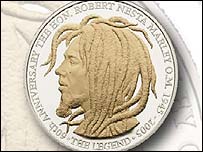According to this article, the ANA (American Numismatic Association is having money troubles to the tune of an operating loss of hundreds of thousands of dollars a year.
But that’s not all. Christopher Cipoletti, the current president, has been accused of theft and mismanagement.
Here’s an excerpt.
The American Numismatic Association, a nonprofit group that educates hobbyists about coin collecting and money, certainly knows how to lose it.
For the past four years, the Colorado Springs-based organization has operated at a loss of hundreds of thousands of dollars a year.
But that’s just one of its problems.
The 115-year-old group, federally chartered as an educational, historical and scientific organization, is beset by questions over its finances and complaints that its leadership fosters a culture of excessive secrecy and demands loyalty oaths.
Some of the group’s 32,000-plus members blame the turmoil on Christopher Cipoletti, a lawyer who took the helm as executive director in 2003.
Cipoletti rejects the criticism and maintains that the organization is financially sound, is more open about its dealings than ever before and is expanding its membership and programs.
And he has taken aim at some of his loudest critics. A civil lawsuit filed by the ANA and Cipoletti claims a group of former employees conspired against Cipoletti, harassed and stalked him, falsely accused him of mismanagement and theft and damaged his reputation.
The dispute casts a cloud over what ought to be heady times for collectors. The U.S. Mint’s redesigned state quarters have generated renewed interest in the hobby — ANA membership is up by 4,000 in the past three years, and traffic at its Money Museum in Colorado Springs is growing.
“It’s unfortunate to have such dissension and turmoil in this organization,” said Beth Deisher, editor of industry publications Coin World and Coin Values. “That makes it difficult to move forward.”
A SPECIAL CHARTER
Founded in 1891, the ANA is one of only two federally chartered nonprofits in the nation. The other is the American Red Cross.
The organization does not receive federal funding, but many enthusiasts consider it a quasi-federal institution because of its 1912 charter, a designation no longer given by Congress.
Congress “looks to the association when it comes to numismatic matters,” said David Ganz, a New York attorney who served as ANA president from 1993 to 1995 and who has testified before Congress 15 times on coin and money issues.
Deisher said the ANA is expected to be forthcoming about its dealings, but she said she and others have noticed a “shroud of secrecy” they say began when Cipoletti took charge three years ago.
“The types of materials and information that’s been available to the press and membership in the past is now being withheld, which is very puzzling to us,” Deisher said.
The ANA has delayed publishing financial information, which often is “abbreviated in format,” Deisher said, making it “very difficult to understand what all of the holdings and financial standings are.”
Cipoletti said the opposite is true.
“We’re putting more information out there for the membership than they’ve had. Before I started, most of the discussions about budgets were done in closed executive session,” he said. “People are now learning more about what we’re doing, and it gives them more of an ability to challenge what we’re doing.”
In fiscal year 2001, the organization had a budget surplus of nearly $80,000. The organization has since operated with a deficit.
According to forms filed with the Internal Revenue Service, the ANA posted a loss of $1 million in the 2002 fiscal year. The deficit dropped to $975,000 in 2003 and $266,000 in 2004. Filings for 2005 have not been made, but estimates show a loss of $714,000 for 2005, nearly double the organization’s projections.
Edward C. Rochette, who worked at the ANA for nearly 40 years, primarily as executive director, before retiring in 1996, said he remembers occasional years of operating in the red, but nothing like the current situation.
“We worked very hard for a balanced budget, which doesn’t mean we didn’t have losing years,” Rochette said. “But I don’t recall ever running the deficits the ANA is now carrying.”
The deficits have prompted the ANA to dip into its endowment fund to offset operating expenses, a move criticized by many members. The endowment fund originated from a Texas rancher whose brother was killed by robbers who made off with what was known as one of the best collections of Mexican revolutionary coins and currency.
“They’ve been not only withdrawing funds from the endowment but also taking money the endowment made as income and not putting it back into the endowment, which decreases the inflationary value of the endowment,” said Carl Schwenker, an ANA member from Houston who served for two years as chairman of the organization’s now-defunct finance committee.
Cipoletti said one purpose of an endowment is to use the money when it is needed.
“As a nonprofit, you sometimes do lose money because your goal is to fulfill your mission, not make money at everything you do,” he said.
He described the organization’s financial status as “incredibly healthy,” and attributed the deficits to operating and program expenses, including changing computer systems and providing scholarships.
Tax filings for 2004 show that investment balances increased by $500,000 to more than $11 million, with net assets at $17.3 million.
“This is a nonprofit, and not everything it does is to make money,” said Thomas Hallenbeck of Hallenbeck Coin Gallery Inc. in Colorado Springs, who is the ANA’s assistant treasurer.
“We operate a museum and a library, and museums and libraries lose money. The only thing that makes money are our conventions and seminars, and that’s the way it should be. Not everything is about money.”
Read the entire article
